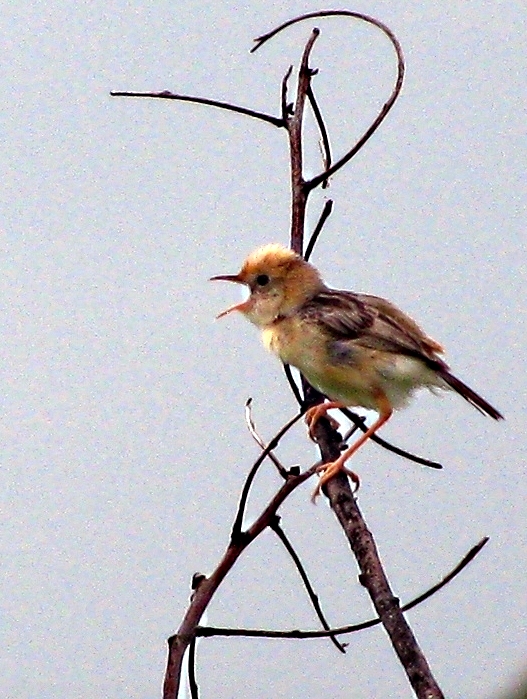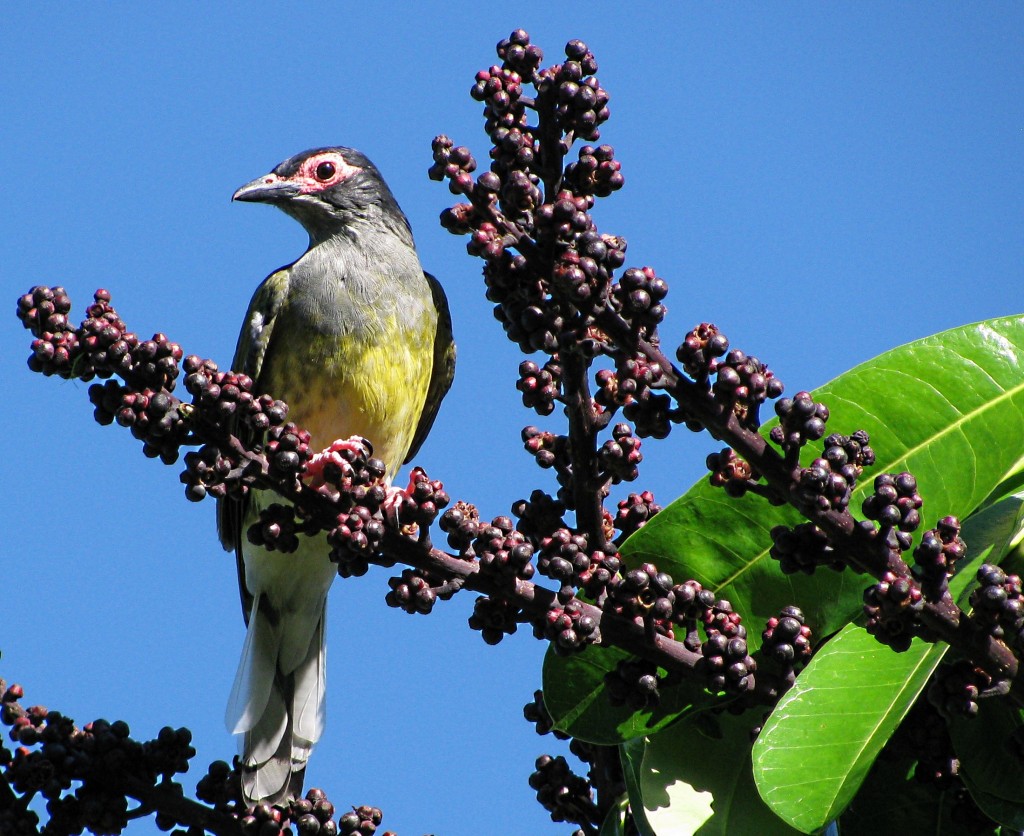
Male Golden-headed Cisticola (© Magi Nams)
After a week of birding, Townsville’s avian diversity still overwhelms me. My 1997 copy of The Field Guide to the Birds of Australia, written by Graham Pizzy and illustrated by Frank Knight, lists 778 bird species occurring in Australia.1 To date, I’ve identified 43 of these and caught fleeting glimpses of a couple dozen more. That still leaves a good 700 or so out there in that seemingly unreal state of frozen, painted illustration and concise descriptive verbiage: Graceful, thrush-like bird of treetops. Slender, upright turquoise-blue parrot. Looks like a darting flame with its fiery rufous rump/tail.1 Those birds, which I haven’t seen, I can’t feel. Yet, when red-tailed black-cockatoos on The Strand winged into trees like ragged splinters of night and chewed the fibrous husks off Javan almonds, they made my heart leap, and I felt them. How many more times, I wonder, will I feel that heart-leap in this country?
This morning, a dozen or more rainbow bee-eaters perched in parallel rows on two overhead wires at the entrance to the Ross River Parkway, their plumages gleaming like lime-and-turquoise satin as they soaked up the dawn. Beyond them, high in the sky over Ross Creek, tree martins – dark swallow relatives with white rumps and bellies – fluttered and dipped and called out in sweetly bubbling voices. Beside a stretch of rough, dry ground edging the paved path, a trio of male golden-headed cisticolas perched atop the highest twigs of leafless shrubs spaced in a loose row and hissed out buzzy, insect-like calls to defend their territories. One of the tiny, sparrow-like birds leaped into the air to fly upward in a brief serpentine display before returning to his perch. In the distance, scattered trees topped rocky hills, and the rock faces of Castle Hill blushed a deeper pink in dawn’s kiss.
Such richness surrounded me – the cloying scent of tropical flowers, the pristine white plumages of a pair of little corellas tearing off grass blades with their heavy parrot beaks, the muted, trumpet-like calls of a half dozen black-cockatoos that swept low over the parkway like dark knights patrolling their kingdom. Were all the preparations necessary for a year away from home worth it? You bet.
In Richard’s home, the water issuing from the cold taps isn’t cold, but ranges from gently cool to almost lukewarm. The refrigerator sweats so much that it forms a lake on one of its plastic shelves, so Vilis or I soak it up with a towel several times a week. The air conditioners in the dining/living room area and our bedroom operate on reduced tariff (giving Richard a 70% savings) and shut off twice a day for an hour to an hour and a half, at approximately 7 a.m. and 7 p.m. The evening shutdown is hardest to bear, the sticky heat which has accumulated in the rest of the house during the day spreading into these cooled sanctuaries and draining us of energy and resolution.

Male Figbird (© Magi Nams)
This evening, Vilis and I walked the riverside path during the shutdown and were rewarded with breezes and more avian discoveries: a male great bowerbird in a tree hissing and displaying his erected purple-pink crest to a female perched beside him, a male figbird with his eyes encircled by vivid red, and – like a cool beacon in the sultry dusk – a slim, intermediate egret hunting the river shallows, its pure white plumage bright against the dark green backdrop of river and riparian growth, its veil of elongated breeding plumes wet at the ends from dangling in the water.
Nearby, two young boys rode bicycles in the dusk, zooming erratically along the paved paths and then skidding to a halt beside Vilis and me. The younger of the two, who was perhaps five or six years old, wore a look of ecstatic intensity on his face. In a flurry of excited words spouted so fast we could hardly make sense of them, he told us proudly, “Tonight I went so fast! I ate all my vegetables!”
Vilis and I laughed, celebrating with him, and then returned to the house, where, with sweat trickling down our skin and sticking clothes to us, we waited for the blessed onset of the air conditioning.
Reference:
1. Graham Pizzey and Frank Knight. The Field Guide to the Birds of Australia. 1997. Angus & Robertson, Sydney, 576 p.


